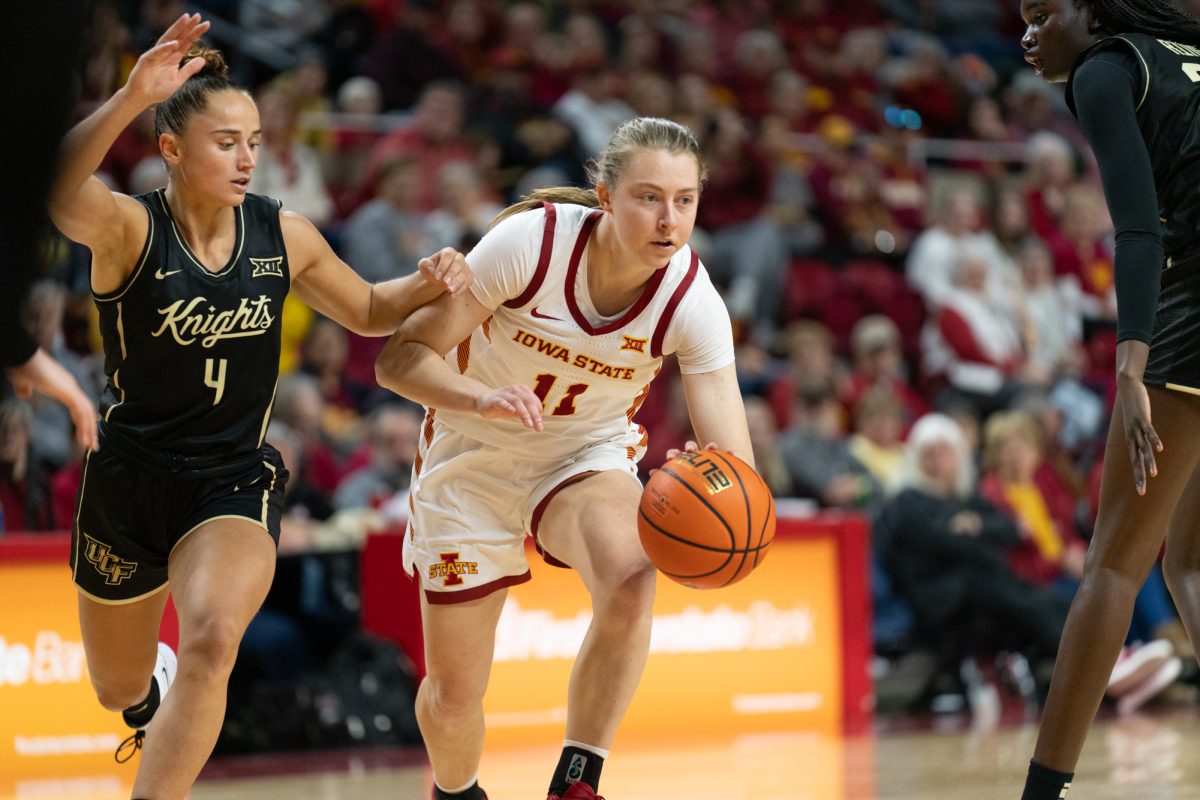ISU offers alternative to phone registration
October 20, 1999
With scheduling for spring classes starting today, students have a new registration system at their fingertips.
This semester marks the first time all Iowa State students can register for classes on the Internet through the AccessPlus system.
The new system is similar to the touch-tone system, which has been in use since 1989, said Laura Doering, associate registrar. They both give clear commands, which make them easy for students to use.
Hours of operation for both systems are 7 a.m. to 8 p.m. Monday through Friday. Restrictive start dates also apply to the online process.
AccessPlus is located at terminals in several campus buildings, on the ISU Web page at www.iastate.edu under the “Students” category, and at www.adp.iastate.edu/accessplus.html.
Doering said online registration offers several advantages for students.
“One of the really nice things about Web registration that [students] can’t get on touch-tone is they can see openings,” she said. “You can actually select an open section.”
With Web registration, it is possible for students to find their classes as they register, but Doering still recommends planning schedules beforehand.
“Students can do their schedule preparation from within Web registration, but those that do it ahead of time may find that they get their schedule built quicker and may actually get that last seat in a section,” she said.
However, Doering said there may be some snafus with Web registration.
The online registration process may miss time conflicts in students’ schedules, while the touch-tone system finds most of them and alerts students.
“Web registration has limited time-conflict checking features, so it will be the student’s responsibility to check for time conflicts,” she said.
Doering suggested that students map out their prospective schedules beforehand on a time grid to make sure conflicts do not exist.
Although the system is new for most students at ISU, some freshmen already have used it.
Jane Jacobson, an academic adviser in the College of Liberal Arts and Sciences, said the freshmen who attended orientation in June used it to register for classes for the current term. “They were our test group,” she said.
There are some concerns with the system, however. Because it hasn’t been tested on a large scale, problems may arise due to the number of people who will use it, Doering said.
If the Web registration program causes other computer programs to slow down, the page will be brought down and another posted that gives the phone number for touch-tone registration.
Barbara Mack, associate professor of journalism and mass communication, said her reservations about online registration lie in her lack of self-confidence for instructing students how to use it.
“Online registration is very likely the way of the future,” she said. “I think it will be important to do an excellent job of educating students.”
However, Mack was unable to attend the three training sessions offered to advisers.
“I wish that there had been additional opportunities for training on the system for advisers,” she said.
Mack also said there should have been mock registration booths in the Memorial Union or open training during orientation classes to give students some experience with the program before actually using it to register.
“I’m sure they figure students are also techno-literate,” she said.
“They’re trying to start it small, and I’m sure it will grow,” Mack said. “A year from now, most students will be registering online.”
There currently is a demonstration program on the Web that shows students how to use the new registration program, Doering said. Students can do a quick run-through of the program to see how it works.
Doering said this should only take five to 10 minutes, and it will help the registration process move faster because students will be more familiar with the program.
The demonstration program also is on AccessPlus.






